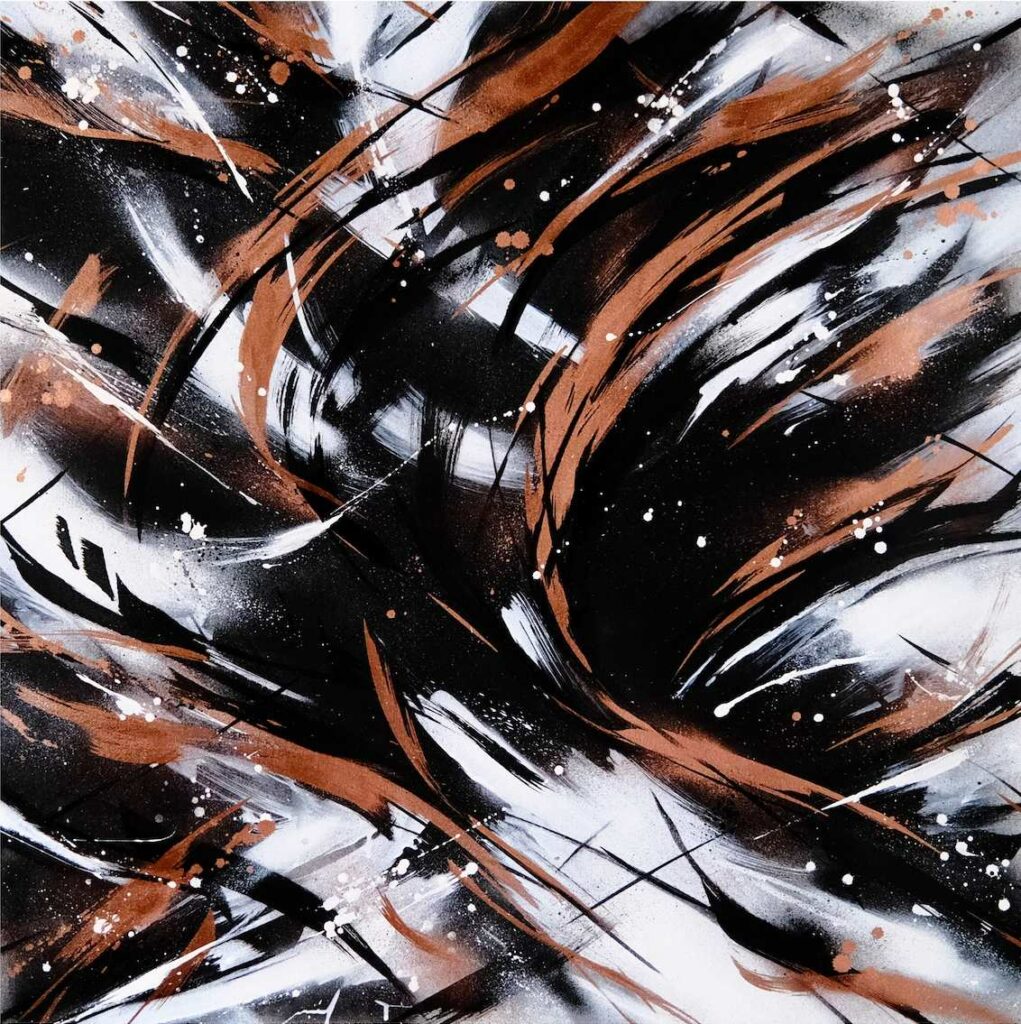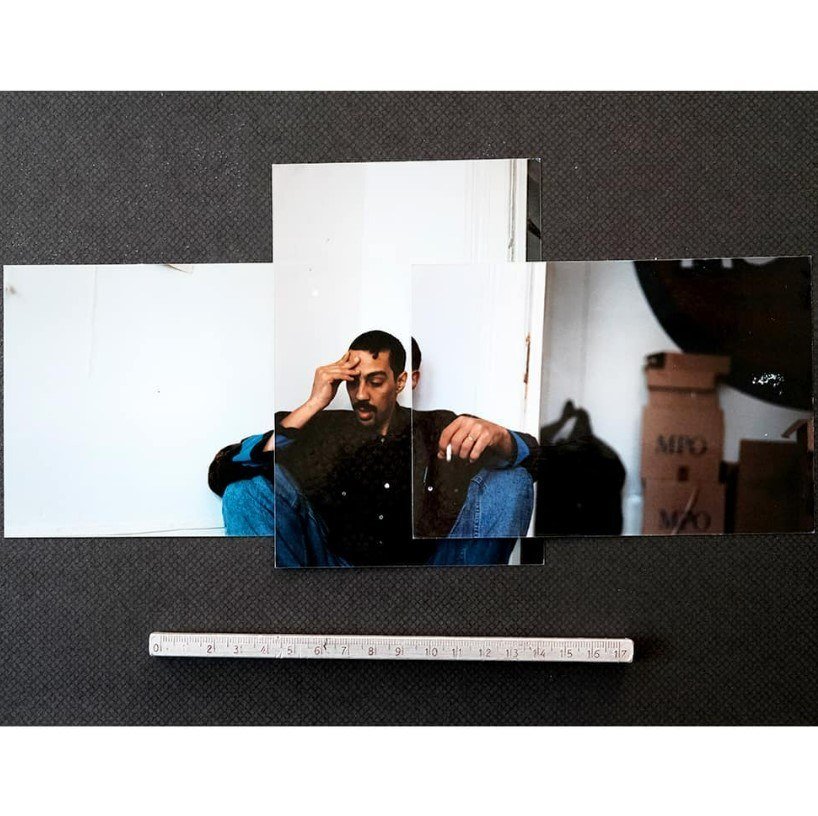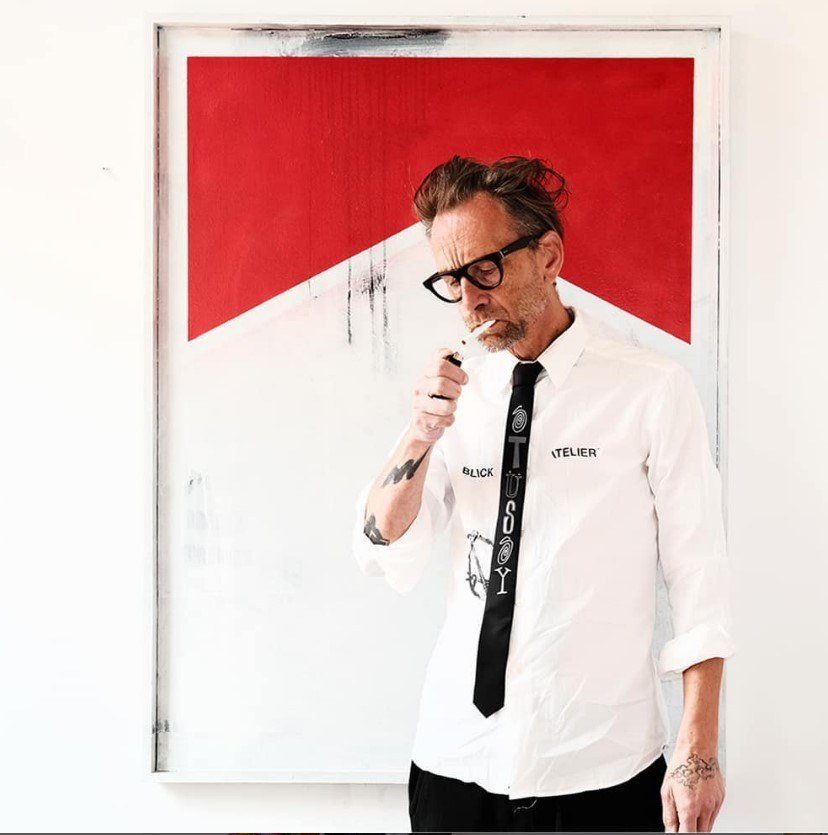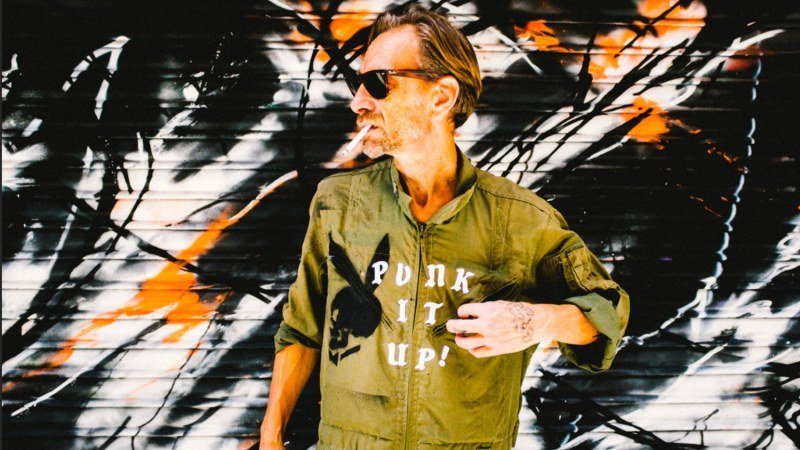James Choules aka SheOne is smoother than the shades he makes. No doubt about it. Despite his hugely successful international art career, SheOne is a very old-fashioned kind of art star. He bears a dose of carefully cultivated classiness. Everything around him is very sophisticated, everything has that smack of retro glamour. And it works, ohh yes, the old charmer does it well.

SheOne is excellent at selling himself, which isn’t to say he is inauthentic – on the contrary. But a man can be genuine and hyperaware of what people want from him. Especially when it comes to his art. We can describe his brilliant art as poetry in motion. Miles Davis, one of the most influential jazz musicians, once said, “Don’t play what’s there; play what’s not there”. There is something about that quote that fits perfectly with SheOne’s art style.

Watching SheOne paint could leave anyone thinking “How does he make it look so easy?” or “It just seems so effortless.” Everything about SheOne is cool. The best part about his style is him. Always true to himself and his style, SheOne is widely recognized as a pioneer of European and abstract graffiti.
With all that being said, let’s dive into the conversation with this extraordinary artist and gentleman
2B: Do you remember when and why you started noticing graffiti walls?
SheOne: The first time I see graffiti really is in the video of Malcolm McLaren, a pop video called The Buffalo Gal, which featured graffiti from New York artist Dondi, and also in the video of Blondie called Rapture. And then this is the first time I see it and it gets me interested in using spray paint.

2B: And how old were you?
SheOne: 14.

2B: Then at that moment were you living in London?
SheOne: Yeah, I was living in London, born in London and then there is a book that came out called Subway Arts, which was a documentary of New York subway graffiti and from this moment, then, yeah, I decided I’m going to be an artist.

2B: And were you with a crew of friends?
SheOne: Well, yeah, other kids at school were into it too. So. Yeah, it’s just something we just start to do. We go and find some spray cans and make up some names and go and paint some things on some walls in my neighborhood. But at this time, graffiti does not really exist in England. There were only a few people who were making it. So we didn’t really have much to copy, we had to discover it.

2B: Did you have problems? At that time graffiti was not allowed. To paint walls in public spaces was pursued by the police. So did you have problems with that?
SheOne: No, it was fine because people did not really know what it was. So it was something brand new. So in a way, it was kind of cool because people didn’t really know what you were doing, you were painting because they have never seen it before.

2B: Thinking about the evolution of your trajectory as an artist, could you give me a summary of your evolution in your long art career?
SheOne: Well, originally I started out to copy New York graffiti, to paint on some walls and some trains. And then when I was in 1994. By 1990 I started to work on canvas to make it more permanent because obviously graffiti doesn’t last very long and it only exists in the picture. So I start to work on canvas and then by the end of the nineties, The end of the nineteens I start to develop my own style away from New York, just my own personal style, and start to work more in black and white and more abstracted and start to have small exhibitions and have some success, and then, finally, in 2000, I get invited to New York by Crash to make my first solo show in New York and a lot of the original subway artists come to visit and then I really established my style and in 2002, I make an Expo in Tokyo with just the black and white painting and, yeah, this is when I really established my idea and my personality of my signature and I’ve been doing the same thing ever since now for 20 years.

2B: You have mentioned this moment when you made a transition from walls to canvas, you were one of the first to do it?
SheOne: I was one of the first people in England to make the transition into making graffiti on making spray paint on canvas for sure.

2B: Do you think your work on walls is the same as on canvases?
SheOne: No, it’s a different thing when you are painting a wall this is graffiti you are really painting for other graffiti writers to see your style, it’s very competitive and the painting on canvas is different. It’s personal, it’s not graffiti because it’s making art. It’s making something that you want to say, they’re two different things.

2B: I would like to know if when you are painting you are thinking about some kind of communication with the public or are you just moving with just gestural movements on the canvas with the can, just something visual or do you want to share a message to the people?
SheOne: There’s no message, no, I’m just concerned about making a painting to express something personal and for the audience, for the viewer in the Gallery, It is up to them to make their own story. I would not tell people what to think, what they see. It’s completely open. I don’t have a message or a story, it’s just that I have an aesthetic and I want to make something that’s never been seen before and something very pure.
In a way, I think when I’m watching or seeing your work I feel a kind of tension because it seems to be a kind of typography but it’s abstract. So you are trying to find something to understand, something but in the end, It’s just movement, so it’s in the middle.
Well, I compare it to composing music. When you hear music, you understand the music and there is harmony between the notes and the chords. So my painting is like this, I’m composing a painting, and I want it to be in harmony so there cannot be a wrong note. You cannot have something that doesn’t fit with the piece. And like music, it is abstract. You have to interpret yourself how it means to you in that time and that place, on different days you can have different feelings about this work. It doesn’t have to be the same feeling every day.

2B: It’s a kind of language in a way.
SheOne: Yeah. It’s the pure language because everything I paint comes from my graffiti tag, from the lettering. So my subject is lettering. I use that as a gestural structure so that it’s not abstract. I’m actually painting letterforms, but in the end, they are represented in a brand new way.
In the same way, the Vanguard was painting flowers. But when you see Van Gogh, it doesn’t look like flowers, it’s just a painting. It’s only when you stand back and your brain tells you it’s a flower, then, okay. Now it’s a flower.
2B: Okay. I think I don’t know if it’s true or it’s my perception, but these ideas that you are experimenting with and your work in general, I think it’s related to Oriental conceptions, with calligraphy, with this only black and white most of the time movement, something extension in one part, but another part is just something very slow.
SheOne: Yeah. Hopefully. I mean I like black and white because I love old black and white movies, old black and white films and black and white photography. I think within this you can make enough information to tell the story. Apparently simple shades and simple colors… all of your works seem to be very simple. Yeah. Because I want it to have the most expression with the least information.
2B: Could you tell me which moment and which artists were or are important for you in your art career?
SheOne: In my art career. In the beginning, obviously, the New York graffiti art, mainly Futura and Zephyr and one there was a group, these were people who took the spray can, and they go beyond just the idea of writing your name and they are able to make something new in painting, using spray paint. I mean, this is the important thing because spray paint is not supposed to be for making art. It was something that teenagers pick up and they make their own expressions with something that is not supposed to be art. And also they make it in a place where it’s not supposed to be for art. They completely changed the rules.
But obviously, when we bring that onto canvas, it gets formalized in the art world. So it gets judged now in a new way by different rules. But the graffiti artists have their own judgment, and we are able to look at each other’s work in a different way to, say, a curator or an art critic because we understand the language that we’re using and the medium. Yeah. The last artist that I like is a New York painter called Christopher Wool, who works a lot in black and white, also very influential.
And for painting. I really love Julian Schnabel. He has a really amazing eye, I guess he kind of influences me somehow, about the excitement of painting and what is possible.

2B: And I know you did a lot of collaborations with other artists, fashion collaborations, and other kinds or types of art. Maybe you could give me some important or the most important collaborations you did?
SheOne: I get asked by companies you make collaborations with. Sometimes one of the good ones was from the footballer Pele because obviously Pele was a very famous football star and he has a foundation where he makes some products and he asked me to design football boots for him to sell for his charities so I make a design and they produce the football move with my style. And yeah, this was very cool.

2B: Two months ago, you had a collaboration with Nick Walker?
SheOne: Yeah. Me and Nick have known each other for a long time, over 20 years. So at different times, we are painting together in collaboration. Ten years ago, we went to Paris and we’re painting on the street just illegally together in collaboration. And then from this time we decided, okay, maybe we can work on canvas together, and now finally, in the last couple of years, we are able to collaborate on canvas and merge our styles. Obviously, Nick is a stencil artist, so his work is very graphic. And because my work is so free, then this combination is perfect, because these two things can work together, because you have the graphic and the freedom. So the mix is very good because we don’t clash, instead, it makes one image, but still, the two artists are very distinct inside the image. So this is a perfect collaboration.

2B: And if you could realize the dream, with which artists do you like to collaborate nowadays?
SheOne: Oh, you mean one who is alive? I was going to say somebody from the Renaissance, but who would I like to work with now? I don’t know. That’s tricky. Yeah. I’m not sure.

2B: Doesn’t matter, James. And, you know, step by step, the interest in your work in Japan is increasing.
SheOne: I think one of the reasons is because your work it’s related to their culture. Yeah.

2B: So I know you were exhibiting in Japan a long time ago. I’m trying to remember where you met Futura. Was it in Tokyo?
SheOne: The first time I meet Futura was in London in the middle of 1994. Yeah, we were both doing something with a London record label making some design for the record cover and he came to London and we just hang out and meet and we get on really well, so yeah, when I go to New York in 2000 I go to visit his studio and hang out and we have been friends since this time.

2B: What do you think? What’s the reason why street art is very famous, very popular nowadays?
SheOne: I don’t know. I don’t really like these terms so I don’t care. Yeah, please don’t ever call me a street ice.

Photos: SheOne

![SheOne, [POP] Pink, Limited edition print](https://2b.rocks/wp-content/uploads/2022/03/SheOne-POP-Pink-Limited-edition-print-1024x1018.jpg)

Leave a Reply